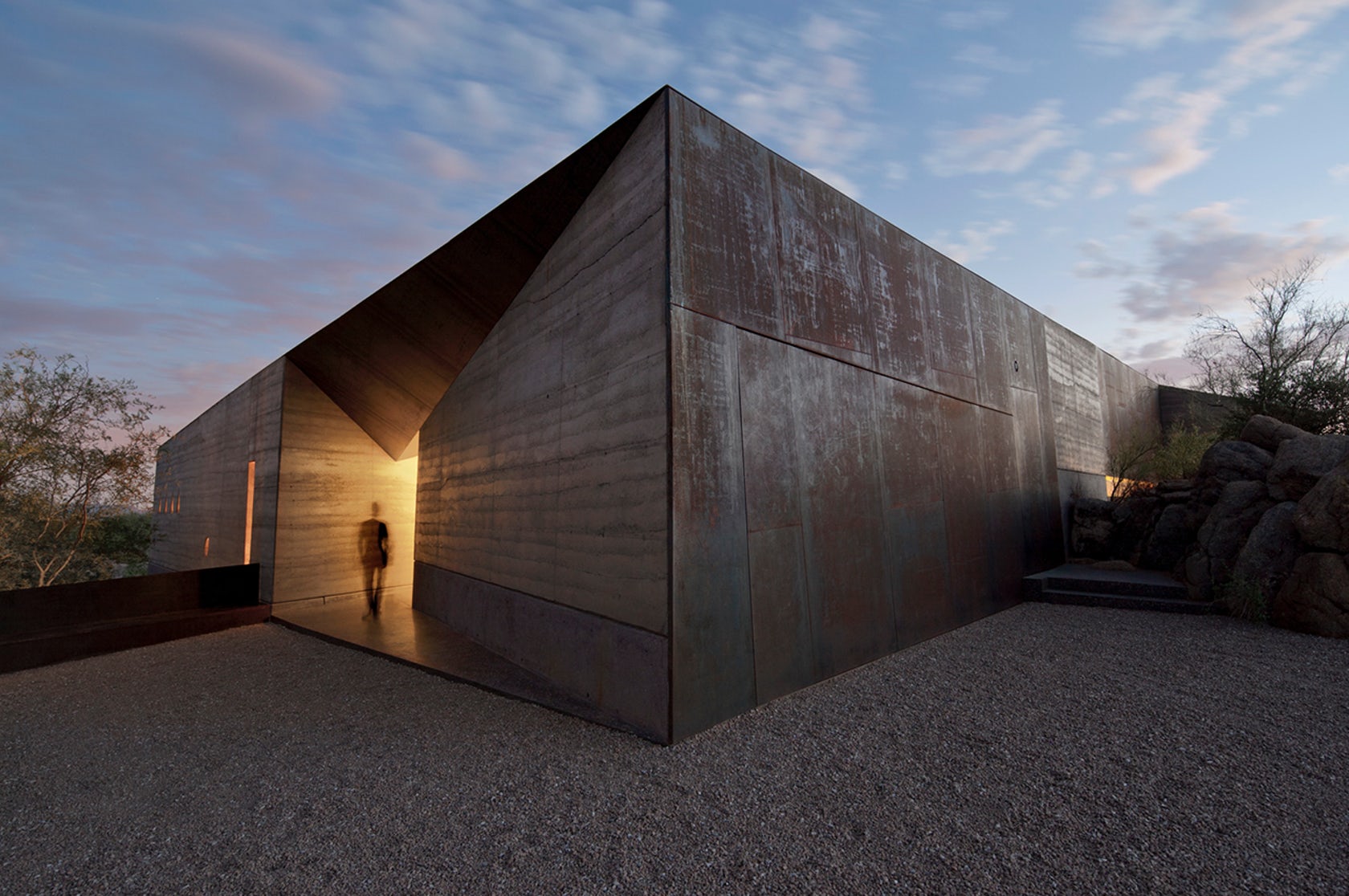Browse the Architizer Jobs Board and apply for architecture and design positions at some of the world’s best firms. Click here to sign up for our Jobs Newsletter.
Few materials have the customizability of terrazzo. An almost limitless combination of colors and patterns are possible if you know how to make them happen. British materials company Dzek has developed a new product that updates the centuries-old terrazzo tradition with a colorful modern finish.

Marmoreal in black and white
Dzek calls its product Marmoreal, after the word that means “of or relating to marble.” Its terrazzo uses marble as the aggregate as traditional marbles do, but it contains much larger chunks of rock than customary. Available with a black or white ground, the material is bold and graphic with a painterly look. Three differently colored marbles are used and their natural variations in size and tone make every tile of the material unique.
The product is only available in tile, not in a seamlessly poured slab, because of the way that it is created. Its unique manufacturing process is also how the terrazzo is able to incorporate unusually large pieces of stone.



Chunks of marble to be used in Marmoreal
Typically, terrazzo is made by laying out a thin mixture of the aggregate and the cement or epoxy binding agent, which is then ground and polished down to the desired finish height. This means that the largest stones that can be used in the aggregate must have roughly the same diameter as the thickness of the finished floor. Palladiana terrazzo, like the kind used in the David Chipperfield–designed Valentino showrooms, lay down chunks of slabs instead of rocks to achieve their large-format look.
Marmoreal uses a different approach. Brent Dzekciorius explained, “Our recipe of marble, marble powder and resin are combined in large mixers and poured into block molds measuring 305 by 124 by 85 centimeters. These blocks are then cut into slabs, which we can then further cut into our standard tile formats.” This unique process creates Marmoreal’s unique look. “No other process provides the necessary depth to hold the large stones.”


Casting Marmoreal blocks

A fresh slab of Marmoreal at Dzek’s factory
This process was developed in collaboration with British designer Max Lamb, who has spent years working with stone for his own practice. “My interest was to see what kind of stone Max would create,” Dzekciorius said, “and how he might work differently using a stone he creates versus a stone he takes from the earth.” Dzek is not strictly a terrazzo company, so it was not assumed a terrazzo product would emerge from the collaboration, but “Terrazzo, particularly precast, seemed to offer the most opportunity to do something interesting.”
Dzekciorius started Dzek in 2013 as an “architectural materials company,” and it works as a running series of collaborations with designers like Lamb. “Our focus shifts depending on our collaborators,” Dzekciorius said, and the company is currently working to produce a product out of volcanic ash with the Italian duo Formafantasma. Dzek has taken the Marmoreal tile and turned it into bathroom furniture, like a tub and sink, and general furniture, like a desk and lighting fixture.

Pair of bathrooms in a New York residence designed by RP Miller using Marmoreal tiles; photo by Brian W. Ferry
Designers in the U.S. and Europe have used Marmoreal tiles for floors, walls, counters and stairs in bathrooms, kitchens and living spaces — basically anywhere traditional terrazzo or marble could go. As the surfaces are used, they will age in a similar way to the raw marble that they are made of. “Stone and terrazzo have a life of their own. They age, patina and move over time,” said Dzekciorius. “It’s not going to look the same in 10 years as it did the day you installed it, and you have to accept that.” Because the product is tiled, it can be relatively easily repaired and replaced with another tile, an advantage traditional poured terrazzo lacks.

Maison Kitsuné, Filles du Calvaire, Paris, designed by Charles-Edmond Henry and Nicolas Dorval-Bory Architectes using Marmoreal tile; photo by Nicolas Dorval-Bory
“Max’s concept was to celebrate the stoniness of stone,” Dzekciorius said about his work with Lamb. Their terrazzo is a festive option and a great example of an unconventional material that you might have never known was out there.
All images courtesy Dzek unless otherwise stated
Browse the Architizer Jobs Board and apply for architecture and design positions at some of the world’s best firms. Click here to sign up for our Jobs Newsletter.




